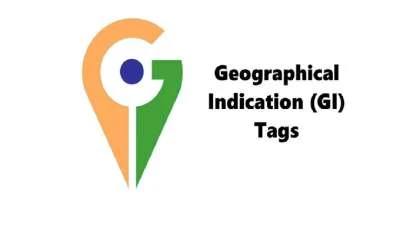Government has recently granted several products the Geographical Indications (GI) tag by the Department of Promotion of Industry and Internal Trade (DPIIT) under the Ministry of Commerce and Industry.

Products that received GI Tags:
| Product | description |
| Narasapur crochet | A traditional art form in the Godavari region of Andhra.The craft produces garments, home furnishings, and accessories made of lace.Origin dates back to 1844 when Macrae and his wife introduced it to local women associated with a Christian missionary. |
| Banglar muslin | The Banglar muslin is one of the popular traditional handloom craft of Bengal.This finest sort of muslin is made of cotton, which are spun to create threads that maintained tensile strength at counts (above 300 counts and up to 600 counts) i.e., higher than any other cotton. |
| Madhya Pradesh Ratlam Riyawan Lahsun (Garlic) | Popular for its robust flavour and high oil content as compared to the other varieties, each bulb of Riyawan garlic consists of five to six cloves. The garlic is known to have a pungent taste and also has several medicinal values. The garlic adds a unique aroma and taste to the curries and other savoury dishes.The garlic is that it can be stored for long days. |
| Cuttack’s silver filigree | The famous ‘Chandi Tarakasi’ or silver filigree of Cuttack, Odisha is a centuries-old sophisticated craft.In Odia, ‘Tarakasi’ is a combination of two words – ‘Tara’ (wire) and ’Kasi’ (design).During Durga Puja, local artisans create ‘medhas’ (tableaus) featuring detailed filigree patterns.Archaeological evidence suggest that filigree was incorporated into jewellery as early as 3500 BCE in Mesopotamia where it is practiced even today as Telkari work.According to historians, there is every possibility that the Tarakasi work reached Cuttack from Persia through Indonesia some 500 years ago by sea trade. |
| Majuli mask of Assam & Majuli Manuscript. | Majuli masks from Assam come in various types, categorized as ‘Mukha bhaona’ (face mask), ‘Lotokoi’ (hanging mask extending to the chest), and ‘Cho Mukha’ (a large mask covering the head and body). The Majuli Manuscript Paintings from Assam illustrate stories from Hindu epics, including the Ramayana, Mahabharata, and subjects from the Bhagavata Purana. |
| Tripura Risa Textile | Risa is a handwoven cloth used as a female upper garment, and also as headgear, a stole, or a present to express respect. These garments were traditionally handwoven. Woven in colourful designs and worn as an upper garment, the risa also has a crucial social and religious significance. Adolescent Tripuri girls are first given a risa to wear in an event called Risa Sormani, at age 12 to 14.Risa is common in almost all 19 indigenous tribal communities of Tripura. However, each community has its own design. |
| Hyderabad Lac Bangles: | Lac bangles from Hyderabad are known for their intricate art and skill. The craft originated in Hyderabad during the Mughal period, and has been passed down through generations of artisans. |
| Gujarat’s Kutch rogan craft & Ambaji White Marble | Rogan art is a cloth painting technique that originated in the Kutch district of Gujarat, India about 400 years ago. The name comes from castor, the main ingredient in the paint.Ambaji white marble is a milky white Indian stone with a black texture. It is known for its durability, easy maintenance, and attractive color and texture. |
About GI tags:
- A Geographical Indication (GI) tag is a name or sign that identifies a product that comes from a specific geographical location or origin.
- GIs are used to certify that a product is made using traditional methods, has specific qualities, or has a particular reputation because of its geographical origin.
- In India, the Geographical Indications of Goods (Registration and Protection) Act of 1999 regulates GI tags.
- The Geographical Indication Registry, which is part of the Ministry of Commerce and Industry’s Department of Industry Promotion and Internal Trade, issues GI tags.
- A Geographical Indication (GI) tag is valid for 10 years and can be renewed on payment of a renewal fee.
- If a GI is not renewed, it can be removed from the register.
Ref:Source
| UPSC IAS Preparation Resources | |
| Current Affairs Analysis | Topperspedia |
| GS Shots | Simply Explained |
| Daily Flash Cards | Daily Quiz |

